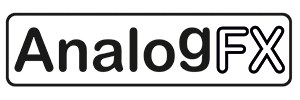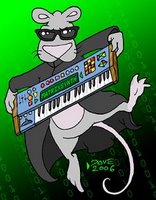Showing posts sorted by date for query LAB:1 Synthesizer. Sort by relevance Show all posts
Showing posts sorted by date for query LAB:1 Synthesizer. Sort by relevance Show all posts
Thursday, December 18, 2025
Sounds From The Future... (Studio Tour)
video upload by Welcome To Steve and Noise Engineering
"Adventure into the creating lab and headquarters of Noise Engineering Co-Creator Stephen McCaul, where he and Kris create synthesizer modules and pedals that channel sounds from the past, future, and new dimensions. If you love synths, euroracks, modular synthesis, moog's, Wendy Carlos, and everything sci-fi, then this video is for you.
CHAPTERS:
------------------
0:00 - Intro
1:04 - Plus Synth Wall
1:50 - Jam 1 (Sax + Synths)
2:28 - Plus Wall
10:42 - Jam 2 (Sax + Synths)
11:16 - Plus Wall
13:00 - The Mothership (totally insane eurorack modular space station)
15:42 - DX7
16:00 - Fender Rhodes
16:51 - Moog Theremin Synthesizer
18:00 - More Synth Modules
18:49 - Synth Creation Lab (where everything is created)
22:37 - Jame 3 (Solo Synth)
23:07 - Pedal Land
23:43 - Custom Wood Equation Structures
24:06 - Original Designs
25:38 - Execution Space
26:15 - More Pedals (Dystorpia + Batverb)
27:17 - Closing / Thanks For Watching
------------------"
Friday, November 14, 2025
JLR's Modular Synthesizers - System Breakdown #15
video upload by John L Rice
"This is my fifteenth video breakdown/rundown, this time for my largest system, the mighty 5U "wall"! 🥳 This is likely the last installment of this series.
Index:
0:00 Beginning
2:23 Preface
4:30 Introduction
5:28 Section 1
Saturday, September 06, 2025
Rare Gear Demo: The Johnson Intonation Trainer (1966)
Note: links to listings are affiliate links for which the site may be compensated.
video upload by Instrument Attic
via this eBay listing
"The 1966 Johnson Intonation Trainer is a rare and intriguing instrument developed by the E.F. Johnson Company of Waseca, Minnesota. Originally designed to assess pitch-matching and pitch-discrimination abilities, this device has garnered attention for its unique features and potential applications in modern music production.  
One of the standout characteristics of the Johnson Intonation Trainer is its full polyphony, allowing all 37 keys to be played simultaneously. Each key is associated with its own oscillator, enabling microtonal adjustments and the exploration of unconventional scales and tunings. The instrument offers four distinct voicing options, ranging from basic sine waves to more complex, reedy tones. Additionally, the “Scale Selector” switch provides a choice between standard tempered tuning and a tunable mode, with individual “Tunable Scale Controls” corresponding to each note on the keyboard for precise pitch calibration.    
Housed in a robust fiberglass case, the Intonation Trainer features a built-in speaker, though it can also be connected to external amplifiers or mixers via standard 1/4” outputs. Some units include a vibrato effect, though functionality may vary between models. 
In contemporary settings, the Johnson Intonation Trainer has found a niche among experimental musicians and sound designers. Its ability to produce rich drones and facilitate microtonal exploration makes it a valuable tool for creating unique sonic textures. The instrument’s vintage analog circuitry imparts a distinctive warmth and character that is highly sought after in modern music production.
Due to limited production and the passage of time, functional units of the Johnson Intonation Trainer are exceedingly rare. Finding one in full working condition, complete with original documentation, is a remarkable discovery for collectors and enthusiasts alike. The scarcity of this instrument, combined with its unique capabilities, underscores its status as a treasured piece of audio history."
via this eBay listing
"Made in 1966 in Waseca, Minnesota by the E. F. Johnson Company. Originally designed as an ear training and intonation device, but in practice it is a unique fully polyphonic analog synthesizer with extensive tuning control. Very few were made, and surviving examples in this condition are vanishingly rare.
video upload by Instrument Attic
via this eBay listing
"The 1966 Johnson Intonation Trainer is a rare and intriguing instrument developed by the E.F. Johnson Company of Waseca, Minnesota. Originally designed to assess pitch-matching and pitch-discrimination abilities, this device has garnered attention for its unique features and potential applications in modern music production.  
One of the standout characteristics of the Johnson Intonation Trainer is its full polyphony, allowing all 37 keys to be played simultaneously. Each key is associated with its own oscillator, enabling microtonal adjustments and the exploration of unconventional scales and tunings. The instrument offers four distinct voicing options, ranging from basic sine waves to more complex, reedy tones. Additionally, the “Scale Selector” switch provides a choice between standard tempered tuning and a tunable mode, with individual “Tunable Scale Controls” corresponding to each note on the keyboard for precise pitch calibration.    
Housed in a robust fiberglass case, the Intonation Trainer features a built-in speaker, though it can also be connected to external amplifiers or mixers via standard 1/4” outputs. Some units include a vibrato effect, though functionality may vary between models. 
In contemporary settings, the Johnson Intonation Trainer has found a niche among experimental musicians and sound designers. Its ability to produce rich drones and facilitate microtonal exploration makes it a valuable tool for creating unique sonic textures. The instrument’s vintage analog circuitry imparts a distinctive warmth and character that is highly sought after in modern music production.
Due to limited production and the passage of time, functional units of the Johnson Intonation Trainer are exceedingly rare. Finding one in full working condition, complete with original documentation, is a remarkable discovery for collectors and enthusiasts alike. The scarcity of this instrument, combined with its unique capabilities, underscores its status as a treasured piece of audio history."
via this eBay listing
"Made in 1966 in Waseca, Minnesota by the E. F. Johnson Company. Originally designed as an ear training and intonation device, but in practice it is a unique fully polyphonic analog synthesizer with extensive tuning control. Very few were made, and surviving examples in this condition are vanishingly rare.
Tuesday, August 19, 2025
Cherry Audio | Introducing Crumar Spirit with Tim Shoebridge
video upload by Cherry Audio
"Crumar Spirit by Cherry Audio captures the unique sound and features of the exceptional analog monosynth from 1983, originally designed by some of the most legendary figures in the synth industry. Spirit is a gateway to sonic experimentation. It is not a polite instrument. Nor is it clean, safe, or obvious. However, twist a few knobs and it will reward you with some of the most colorful sounds you have ever heard from a virtual analog software synthesizer.
https://cherryaudio.com/products/spir...
00:53 - Music Intro by Tim Shoebridge
02:05 - Introducing Crumar Spirit by Cherry Audio
03:28 - Spirit Signal Path
05:49 - Mod X
08:07 - The Oscillators
13:40 - The Filters
20:34 - Audio Mixer
21:14 - Shaper Y
26:20 - Arpeggiator
30:15 - Voice Modes and Multi-Voice Cycling
31:04 - Matrix Z Modulations
31:45 - Dual Effects Chain
34:42 - Conclusion"
Cherry Audio | Crumar Spirit
video upload by Cherry Audio
Cherry Audio | Spectres Preset Pack for Crumar Spirit by James Dyson
video upload by Cherry Audio
"100 additional presets for Cherry Audio's Crumar Spirit synthesizer by James Dyson that showcase its darker and more atmospheric side in nine categories. Explore more advanced modulations, integrated effects, rhythmic arpeggios, and aftertouch performance features.
Just $9.99, exclusively from https://store.cherryaudio.com/presets...
18 Arps
9 Basses
5 Brass
8 Chords
10 Keys
9 Leads
17 Pads
14 Polyphonic
10 SoundFX"
Crumar Spirit by Cherry Audio: The rare Spirit reborn! (Part 1)
video upload by CatSynth TV
"We are proud to preset the new Crumar Spirit by Cherry Audio, a meticulous software recreation of the unique, quirky and elusive Crumar Spirit analog synthesizer from the early 1980s. This is a two-part series. In Part 1 we go over most of the original-instrument features (minus the arpeggiator).
Part 2, covering the remaining features and exploring factory presets, will be released soon.
To find out more about Crumar Spriit by Cherry Audio, please visit: https://cherryaudio.com
00:00 Introduction
00:34 A brief history
01:54 Overview of Crumar Spirit by Cherry Audio
02:35 Oscillators
09:59 Upper filter
12:41 Lower filter
20:02 Noise generator
23:43 Shaper Y (and Shaper Y audio path)
33:24 Mod X
41:24 Conclusion"
Merch: https://shop.catsynth.com



Crumar Spirit by Cherry Audio is a meticulously crafted virtual recreation that captures the unique and captivating features of the exceptional analog monosynth from 1983, originally designed by some of the most legendary figures in the synth industry. In collaboration with Crumar, we have reopened a time capsule to revive this Italian cult classic and thoughtfully elevated it with Cherry Audio's signature style.
Spirit is a gateway to sonic experimentation, whether you are after wild, unpredictable timbres or warm, analog tones. It is not a polite instrument. Nor is it clean, safe, or obvious. However, twist a few knobs and it will reward you with some of the most colorful sounds you have ever heard from a virtual analog software synthesizer.
Crumar Spirit includes over 430 sensational presets in 12 categories
Producers will find immediate inspiration in Spirit's extensive preset library, created by a talented sound design team led by veteran sound designer James Terris. And don't miss the Spectres for Spirt Preset Pack (sold separately), featuring an additional 100 additional presets by James Dyson.
A "Little Synth" Designed by Legends
Crumar S.P.A., based in Castelfidardo, Italy, was a notable player in the 1970s musical instrument industry, specializing in home organs, digital pianos, and multi-sound keyboards, and with a significant focus on the U.S. market. Sante Crucianelli, the son of the owner, became the driving force behind Crumar's design and strategies. Crumar became known for its open lab culture, frequently allowing competitors to test instruments, a rare practice for the time. Another key figure during this period was Luciano Jura, a designer, musician, and programmer. Luciano became crucial as Crumar's point of contact with synth pioneer Bob Moog, which led to a collaboration that resulted in the creation of Crumar's Spirit synthesizer.
Although many details have been lost due to the passing of key figures and the closure of Crumar, the development of the Spirit synthesizer in the U.S. is well documented. Key contributors to the project, codenamed "Little Synth," included Moog engineer Jim Scott, Moog clinician and electronic music historian Tom Rhea, and Bob Moog himself. The project likely began around 1980 or 1981, and incorporated elements from earlier projects by Scott and Moog. Rhea played an essential role in defining the Spirit's key features, such as the keyboard scanning setup, panel layout, functional architecture, and technical documentation. The Crumar Spirit went into production and was released in late 1983.
Sunday, July 06, 2025
A $20 MIDI synthesizer based on the SAM2695 chip (#seeed #XIAO-MIDI-Synthesizer)
video upload by Floyd Steinberg
"Here's the #seeed 'XIAO MIDI' #synthesizer, a $20 box based on the #SAM2695 synth-on-a-chip and the XIAO ESP32-C3 MCU. You can get it here: https://www.seeedstudio.com/XIAO-MIDI... Table of contents:
00:00 quick sound impression
00:12 hi
00:38 hardware overview
00:57 default firmware
01:50 creating a firmware that actually supports MIDI (shoutout to @SimpleDIYElectroMusicProjects )
03:12 build a 5 pin MIDI in plug
05:23 some sounds: piano
06:20 saw wave pad
06:34 "crystal ep"
07:13 analog pad
07:27 'glass pad'
08:05 synth brass
08:23 drum kit
08:33 on NRPNs and SYSEX using @intechstudio 's GRID controllers
09:13 NRPN explained (Filter cutoff frequency control)
10:54 SYSEX explained (Reverb time control)
11:38 calculating the checksum
12:20 live tweaking demo
13:01 same, but using multiple tracks
14:25 conclusion; some feedback to SEEED
Also check out https://github.com/kinoshita-lab/MIDI... which uses the same chip but already has a MIDI capable firmware. https://www.tindie.com/products/kinos...
HÄLP ZIS CHANNEL
https://www.patreon.com/floyd_steinberg
https://floydsteinberg.gumroad.com/
https://floydsteinberg.bandcamp.com/"


Features 1: Zero-Barrier Creation, Perfect for Music Beginners
With three preset modes and plug-and-play functionality, you can dive straight into music creation—no complex setup required. Built-in speaker and four tactile buttons deliver an intuitive, self-contained experience that eliminates external dependencies. Start making music from the very first note, no prior expertise needed.
Features 2: All-in-One MIDI + Metronome – Smarter, Smoother Workflow
XIAO MIDI synthesizer comes with a pre-set Metronome Mode, where you can press the buttons to change your BPM and toggle the drum track to effortlessly sync rhythms and control your entire beats with one single device. No need for extra devices or apps.
Features 3: Pro-Grade Performance for Advanced Players
Open-source hardware/software architecture supports deep customization and advanced sound design. With 64-note polyphony and 128-note capacity, unlock limitless sonic possibilities—craft your own signature sound engine, whether you're a beginner or an audio hacker.
Features 4: Ultra-Portable & Fully Hackable
Pocket-sized design (71mm × 49mm × 28.5mm) lets you capture inspiration anytime, anywhere. The 3D printed enclosure is fully open-source for you to remix and customize—not just an instrument, but your personal music canvas.
Saturday, April 05, 2025
EMS Synthi AKS
Note: links to listings are affiliate links for which the site may be compensated.
via this VEMIA listing
Click the auction link on top when you get there for additional listings.
VEMIA is Peter Forrest's auction house. He is the author of The A-Z of Analogue Synthesizer Books.
via this VEMIA listing
Click the auction link on top when you get there for additional listings.
VEMIA is Peter Forrest's auction house. He is the author of The A-Z of Analogue Synthesizer Books.
Sunday, March 23, 2025
MOTM / Synthesis Technology's Paul Schreiber Has Passed Away
Paul Schreiber at CONTROL in 2018


It has come to my attention that Paul Schreiber has passed away.
Pictured: Paul Schreiber at the 2006 NAMM show. Top from this previous post (pic by fr1zz), and bottom from this post (pic by Synthtopia) - this is the first image of Paul on the site. There is one comment in that post: "He's a good guy." Indeed.
Readers of the site should be familiar with his work. He was the man behind MOTM and Synthesis Technology.
To say Paul was one of the greats to influence the synth community would be an understatement. He was pivital to the rebirth of modular synthesizers. He started when modular as we know it today was in its infancy, as one of a very small group of large format DIY modular manufacturers along with Blacet, Modcan, Cynthia, Wiard, Oakley, STG, Catgirl/CGS, Tellun/Lower West Side Studio YuSynth, Jurgen Haible, and of course DIY staples like Thomas Henry/ MFOS, Ray Wilson and PAiA (see this post for some modular formats back in 2007). I focused mainly on those offering DIY. There were other manufacturers including Synthesizers.com, Club of the Knobs, MOS-LAB, Moon Modular, MacBeth, CMS, and more. Feel free to mention others in the comments. This post is about Paul, but I think it's important to reflect on some of the large format modular manufactures he was amongst at the time.
Paul created the MOTM format of 5U modules in 1998. MOTM stood for Module of the Month offering monthly DIY kits. From Wikipedia: "MOTM was created by Paul Schreiber in 1998. The system was created in part due to the renewed interest in large-format analog modular systems that occurred in the late 1990s. Between 1998 and 2021, over 8000 modules were sold. The company, Synthesis Technology, also offered a limited number of modules in Eurorack[2] and Frac[3] format."
He was also helped design the Moog/Realistic MG-1. From Wikipedia: "In 1980, Moog Music was seeking to contract manufacture a mass-marketable synthesizer which could be sold via a large retailer. Moog representatives secured an appointment at the Radio Shack corporate offices for a 5-minute demonstration. Radio Shack approved the concept, and Paul Schreiber (then employed by Tandy Systems Development) worked together with Moog on the synthesizer's design to achieve Radio Shack's price requirements.[2][3]"
He later joined the eurorack scene with Synthesis Technology branded modules. FYI, his site for MOTM was always http://www.synthtech.com/, short for Synthesis Technology. The first post to mention Paul and MOTM was posted just under twenty years ago here on MATRIXSYNTH back on August 26, 2005. If you click through you will see it was a post announcing the MOTM/synthtech.com site was going down for the weekend. He announced he was retiring from the synthesizer business in August of 2023.
I beleive the first synthtech eurorack module was the MOTM E340 Cloud Generator. The first demos were posted on July 14, 2009, followed by a mockup of the front panel on July 20. The first post to mention Synthesis Technology was an Epic Son track by John L Rice in August of 2011. Since then there has been approximately 845 posts to feature MOTM, and at least 398 Synthtech.
You can find a number of interviews with Paul in previous posts here.
It's worth repeating, Paul Schreiber was one of the key figures that brought modular back to the masses. He was both respected and loved by the synth community. It's impossible to overstate his influence. He will be missed.
The following are the first the last video interviews with Paul to be featured on the site:
The SynthSummitShow Episode 2: Paul Schreiber (Synthesis Technology) and A.Dapt (music producer) ...
Streamed live on Oct 2, 2015 Flux302 of Fluxwithit.com. Details previously posted here.
SysEx Dumpster - Episode 44 - a conversation with Paul Schreiber
video upload by Sysex Dumpster on Jul 30, 2023. Details previously posted here.
The first videos to feature Paul presenting a module was back on January 3, 2010, and the first interview on SoundCloud in 2013, and he was of course featured in the modular documentary film I Dream of Wires.
Friday, January 31, 2025
Bad Gear - Texture Lab
video upload by AudioPilz
"Welcome to Bad Gear, the show about the world’s most-hated audio tools. If sound synthesis in general was a family, granular synthesis would be the basement-dwelling and terminally online distant music producer cousin who listens to the sounds of humpback whales and lives off a diet of - depending on the moon phase - stone age keto or vegan MREs.
Today we are going to talk about Liven Texture Lab. This 2023 Sonicware synth and sibling of the Sonicware Liven Ambient takes granular synthesizer out of its natural software synthesizer habitat, its UI is devoid of any proper visual cues to make the technique somewhat controllable for music production and comes with two goldfish brains of sample memory."
Chapters:
00:00 Intro tune
00:59 Overview Liven Texture Lab
01:46 Short Granular Synthesis Tutorial
03:12 LFOs, Envelopes
03:24 Resonant Filter
03:33 Reverb Effect ( Shimmer Reverb )
03:52 Lack of USB
04:08 Processing of External Audio, Freeze Effect
04:17 What else? ( Sequencer , Internal Speaker , Arpeggiator , Thanks!!!)
04:52 Hate Screen
05:18 Jam 1 ( Downtempo Weirdness )
06:07 Jam 2 ( More Downtempo Weirdness )
07:05 Finale ( 128 BPM Weirdness )
07:35 Verdict
06:46 Patreon Granular Shoutout
Thursday, December 26, 2024
Korg Wavestate Grime Industrial Techno Presets. No Talk Demo
video upload by Anton Anru
"Dive into the depths of gritty sound design with Grime Lab, a collection of 50 presets crafted for the Korg Wavestate. This soundset is dedicated to the raw, unpolished, and menacing side of music production, blending analog and digital grit, and infused with noise, detune, and distortion.
📦 Get this soundset: https://antonanru.sellfy.store/p/wave...
It Includes: 12 Basses, 10 Arpeggios, 9 Leads, 10 Pads, 9 Textures.
🦠 Inspired by industrial, darkwave, garage, techno, and breakbeat artists known for their heavy, dark atmospheres, Grime Lab delivers a palette of sounds that reject sweetness and embrace imperfection. Expect dirty, powerful, and noisy timbres that bring a bold edge to your productions. Perfect for any genre that demands weight, power, and a touch of sonic chaos.
💾 Each sound is designed to stand out, adding raw energy and dark atmosphere to your music. No clean tones—only noise, grit, and distortion for those who dare to push boundaries.
🧿 These performances are perfect for genres such as Techno, Industrial, Garage, Breakbeat, Cinematic, Experimental, Synthwave, Retrowave, Ambient, New Age, Electronica, Pop, and others.
They also work well for movie soundtracks, games, apps, digital art, sound art live performances, and VR landscapes, providing the retro atmosphere that many projects require.
Tuesday, December 03, 2024
microKORG2 NEW SOUNDS (4 BANKS - MUSIC DEMO) 🎹🔥
video upload by FutureMusic.es
"Korg has announced with great fanfare the release of four new microKORG2 sound packs, featuring completely exclusive programming for this versatile and popular best-selling synthesizer…
[ESP] Korg anuncia a bombo y platillo el lanzamiento de cuatro paquetes de sonidos microKORG2, con programaciones totalmente exclusivas para este versátil y popular sintetizador superventas…
00:01 microKORG1 Best Selection
01:54 Templates And Tutorials
03:32 BLINKSONIC Vol1 Classics
05:16 BLINKSONIC Vol1 Acoustic Feel
07:31 BLINKSONIC Vol1 Calm
11:00 BLINKSONIC Vol1 Hybrid
15:11 BLINKSONIC Vol2 Energic
18:51 BLINKSONIC Vol2 Wild
22:08 BLINKSONIC Vol2 Weird
25:48 BLINKSONIC Vol2 Basses
Thursday, October 17, 2024
Ambient Ø Beginner's Guide [#1 Basic Operations & Playing Techniques (without using the sequencer)]
video upload by SONICWARE
Ambient Ø Beginner's Guide posts
"SONICWARE LIVEN Ambient Ø | Soundscape Synthesizer
https://sonicware.jp/pages/liven-ambient
We are creating the Ambient Ø Beginner’s Guide series with the collaboration of Daniel Beck Rose, also known as @SonicCartography . This is the first video, titled 'Basic Operations & Playing Techniques', which compiles essential information for playing Ambient Ø without using the sequencer.
The second video, Sound Design, will explore deeper aspects of sound creation.
Daniel is one of the world's top experts in using Texture Lab, and his series of Tips & Tricks videos are incredibly helpful, so we highly recommend checking them out. [playlist below]
Ambient Ø Beginner's Guide : #1 Basic Operations & Playing Techniques
00:00: Introduction
00:31: Selecting Pattern Palettes
00:47: Four Layers Overview
01:46: Octave Settings
03:03: Secondary Functions with the func button
03:45: Filter Settings
06:34: Secondary Parameters with the shift button
07:20: Amp Envelope Settings
09:15: Level & Pan Settings
09:58: Send Amount to Reverb & Shimmer
11:40: Reverb Settings
14:15: Effects Settings
16:16: About Playing Techniques
16:52: Notes Hold Operations
18:19: Voice Mode Settings
19:01: Arpeggiator Settings
20:46: Various Techniques for the Arpeggiator
23:20: Demo without using the sequencer"
Sonicware Liven Texture Lab Tutorials by Sonic Cartography
Tuesday, October 08, 2024
Arturia Introduces Synthx V: A Recreation of the fabled Elka Synthex in Software
video uploads by Arturia
"Introducing Synthx V, a masterpiece of analog sound design that captures multitimbral magnificence and dual-layer architecture of the fabled Elka Synthex in unprecedented detail. Elevated with advanced drag-and-drop modulation, effects and expressive keyboard controls - discover the ultimate tool for rich, symphonic analog sounds."
User videos:
Arturia Synthx V: A detailed demo/tutorial of an elusive synth reborn
video upload by CatSynth TV
"We present Synthx V, a new instrument from our friends at Arturia that recreates the sound and experience of the legendary and elusive Elka Synthex. The Synthex was a polyphonic analog synthesizer that had a few relatively unique features including pusle-width modulation and ring modulation and both oscillators. It had a particularly lush and vibrant sound.
We go over all the main features of the Synthx V as well as a few of the factory presets."
00:00 Introduction
00:28 History of the Elka Synthex
01:23 Overview of the Synthx V
02:03 Oscillators
09:46 Filter
14:12 Chorus
15:49 Unison Mode
17:11 Layers
19:46 Multi-Arp
25:35 Modulators
29:31 Effects
34:29 Factory Presets
40:18 Conclusion
Merch: https://shop.catsynth.com
Patreon: https://www.patreon.com/catsynth Ko-Fi: https://ko-fi.com/catsynth
Synthx V - Arturia | No Talking | @ArturiaOfficial
video upload by DKS SYNTH LAB
Timeline
0:00 Intro
0:10 Pulse Width Pad
1:29 Welcome Home
2:29 Bouncer Bass
3:02 Careless Memories
3:43 Dreamstate
4:30 Nova
5:22 Imperfect Pad
5:54 Cosmic Odyssey
6:38 Cyclone
7:16 Elka Dreams
8:01 Hypnos
9:01 Instant Hit
Saturday, October 05, 2024
SynthfestUK 24 Synth Coverage
video uploads by sonicstate
Update: moving this post up once as new videos have been added. Bookmark this post for updates.
Use the player controls to skip around.
Playlist:
1.SynthfestUK 24: Knobula - Synth Modules and Toy Pianos
At SynthfestUK 2024, we met up again with Jason, who gaves us the updates in the world of Knobula. On display was the new 'dark mode' Poly Cinematic module, for more monochrome rigs ;-]2. SynthFestUK 24: PWM - More Mantis News
At the show we made a beeline for the PWM stand, where Paul gave us the latest Mantis news.3. SynthfestUK 24: Roland Unveils the Juno-D Series with Zen-Core Sound
And yes, it's out there in the world now!
We caught up with Andrew and Ludwig who showed us around the new updated Juno-D series: Juno-D6, D7, and D8. They have the same keyboard action as the Fantom-O series and a new colour screen, making it easier for performers to navigate on stage. And they can be powered by a USB-C mobile battery, perfect for buskers ;-) Running Roland's Zen-Core sound engine, they also incorporates features like a 64-step sequencer and a phrase pad for live sample triggering.
Prices range approximately from £949 to £1199.
LABELS/MORE:
AJH,
Analogue Solutions,
Audio Computer,
CB Electronics,
Clavia,
Emu,
eurorack,
Expert Sleepers,
Interviews,
Knobula,
New Makers,
New Modules,
News,
PWMusic,
Roland,
Skold Modular,
Soundgas,
Synth Books,
SynthFest UK
Friday, August 16, 2024
50 Custom Patches for Madrona Labs Sumu
via SYNTH_NYC
"Following my 50 custom patches for Kaivo, I thought I gave Sumu a shot.
Sumu is even pushing further the sonic boundaries; you can create some never heard before sounds.
I have designed 50 custom patches from scratch (using the Default patch) for Madrona Labs Sumu (1.0.0b15)
You can listen to them in high resolution (24bit 96kHz PCM WAV masters, FLAC encoded) on my site (optimized for Chrome on MacOS and Windows): https://synthnyc.com/index.php/album/madrona-labs-sumu-custom-patches-bank-1/
or in low resolution on my bandcamp: https://synthnyc.bandcamp.com/album/sumu-custom-patches-bank-1
All sound demonstrations have external FX.
The first 25 patches are using factory Partials.
The last 25 patches are using PPG WaveTerm samples / transients
https://www.hermannseib.com/english/synths/ppg/wtbwave.htm#sorted
http://ppg.synth.net/waveterm/wt_lib.shtml
which I transformed into Partials using Vutu (0.9.9).
Those are my favorite PPG sounds; I have used them in my Waldorf M ‘The Blue Journey’ sound bank.
https://waldorfmusic.com/produkt/soundset-synth-nyc-the-blue-journey/
From patch 25, each patch name and sound file name has the PPG Transient name embedded in it; e.g. Sumu 34 T864 is using PPG Transient T864. I invite the audience to listen to both the PPG original sample and Sumu patch I created from it to assess the transformation (the objective is to create something new and different, not a 1:1 replica).
Starting from Patch Sumu 17 Clouds (and almost exclusively used till Patch 50), I’ve discovered an another way (compared to Default patch / most factory patches and user manual recommendations) to patch the Sumu Partials module. This opens up Sumu to ultra innovative sounds; you can use Sumu as a granular synthesizer with each grain harmonic having a different envelope / amplitude…
Sumu has become one of my all time favorite digital synthesizer along with Waldorf Iridium, Fred’s Lab Manatee and Korg modwave native.
I hope you’ll enjoy the sound bank as much as I enjoyed programming it."
Monday, August 12, 2024
Aly James Lab SY-4X


via Aly James Lab
Meet SY-4X
SY-4X is not only a perfect re-creation of the SY-1's inner circuit, but it also offers significantly more options. These include four units in one, trigger-controlled 'mode scanning,' CMOS circuit 'defect' control to enhance harmonics beyond the original, real-time VCF integrator cap offset for dynamic pole movement, fine-tuning envelope response to match your playing style, and additional features like Drum Kit and Keyboard Modes.
4 Times the fun
SY-4X provides four Syncussion SY-1 modules in one neat package, with some modules featuring additional modifications like noise direct injection or a Custom Mode A. The four modules allow for creating an 8-voice drum kit, four mono synths (coupled voices = 4 oscillators per module), or a four-voice poly synth (4 x 4 oscillators). You can also mix modes, such as three modules in Drum Kit mode and one in mono synth mode (keyboard controlled). In any play mode, you have full control over every voice parameter—sky's the limit!"
Thursday, July 25, 2024
Fred's Lab Manatee Custom Patches [Bank 1] by synth_nyc
You can find high res demos on synth_nyc's website here.
Manatee is 4-part 10/16-voice fast workflow desktop synthesizer with spectrum modulation and many digital algorithms by Fred's Lab, currently available for pre-order on Kickstarter and the Fred's Lab website.
Tuesday, June 04, 2024
TTSH Mini Meanie Arp2600 (Clone) - Its a Monster!
video upload by Andy Whitmore
"TTSH Mini Meanie Arp 2600 Clone Analog Synthesizer
This is one of the very few examples of a Synth today being built as it was in the 1970s - authentic analog technology.
The TTSH Mini Meanie Arp 2600 clone was released in 2015 by The Human Comparator.
The synth is designed to be built at home – although a lot of synth enthusiasts have them built by a Synth tech – which considering how complicated it is & how many soldering points there are – is probably safer.
The original Arp 2600 came out in the early 1970s to compete with Moog – amongst others.
Its goal was to take synthesis out of the lab & into the hands of the musicians.
The TTSH or Two Thousand Six Hundred Mini Meanie is a Modern version of the Original Arp 2600 at about 73% of the original size making it the "mini meanie".In terms of electronics the TTSH is pretty much identical to the early 70s grey faced model 2600P, which includes the built-in speakers (although these speakers are way better than the original speakers). Additionally it has awesome orange LED sliders as standard. (nerdaudio.com)This particular TTSH v3 was built by Margo in November 2023 at her workshop in North London.
Extras include
Midi
Osc sync mod – sync osc 3 to either osc
Dc removal mod
Dc off set – gets massive thump open vca
Envelope range mode. Adsr - otherwise the release has no sustain (as per the original 2600) – now the sustain goes up to triple time.
Small mod on reverb amp – less hummy
Clock mod allows you to pole sync – clock sample & hold
This Mini Meanie cost £3000.
In this video – I explore the synth & show you some of the sounds it is capable of.
Thanks for watching."
Tuesday, May 21, 2024
Arturia Introduces MiniBrute V | Ferocious Analog Softsynth
video upload by Arturia
"Introducing MiniBrute V: a softsynth that not only recreates the distinctive analog grit of its hardware predecessor, but elevates it with modern flexibility, expanded polyphony and a built-in FX rack. Add the Brute spirit to your production."
video upload by Arturia
"Join Lena as she takes us through a detailed exploration of MiniBrute V: a software emulation of the original MiniBrute hardware. Learn how to create rich and dynamic sounds with a no-nonsense interface and discover MiniBrute V's expanded FX options and polyphonic voicing - that go far beyond its monosynth DNA.
Discover MiniBrute V → https://bit.ly/3WQQPG5
_CHAPTERS
00:00 Intro
01:06 Sound Generation
02:02 Saw
02:51 Square
04:08 Triangle
06:07 Sub Osc
06:49 Noise Generator
07:19 Filter
12:55 Unison
14:07 LFO
15:05 Arpeggiator
15:39 Velocity
16:53 Aftertouch
17:12 Vibrato
18:13 Mod Wheel
18:30 Pitch Glide
18:59 Dispersion
19:55 Effects
21:33 Outro"
Arturia MiniBrute V: A detailed demo & tutorial + hardware comparison
video upload by CatSynth TV
"We take a detailed look at the new MiniBrute V from Arturia. A recreation of their very own MiniBrute monophonic analog synthesizer. We go over all the features emulated from the original, as well as the addition features introduced for this software version. We also do a brief comparison with our MiniBrute 2 here at CatSynth HQ.
For more information, please visit arturia.com
00:00 Introduction
00:30 Overview
00:51 Oscillator
05:06 Filter
10:24 Arpeggiator
12:50 Comparison with the MiniBrute 2 hardware
15:41 Unison Mode
16:53 Polyphonic Mode
17:27 Dispersion Parameters
17:59 Effects section
21:24 Factory Presets
23:22 Conclusion"
Arturia Minibrute V | No Talking | @ArturiaOfficial
video upload by DKS SYNTH LAB
Timeline:
0:00 Intro
0:10 Dark Atmos
1:15 Abyssal Horn
2:17 Brute Saw
3:43 Sonic Crunch
4:45 Kiki Keys
5:48 PH 0
6:09 Evolving Stutters
6:42 Dark Unison
7:33 Vaisseau Mere
8:41 Pluck Pad Pulse
10:03 Dirty Harry
10:58 Arp And Octave Seq
11:32 Bass Movements
12:09 Berlin Snowfall
12:58 Brute Solina
Arturia MiniBrute V Review
video upload by Molten Music Technology
Index:
Intro - 0:00
Selection of presets - 7:16
Basic Waveforms - 21:06
Filter - 25:44
Vintage knob - 29:39
Effects - 30:41
LFO - 38:54
Aftertouch - 40:22
Other bits and pieces - 41:32
More sounds - 42:45
Conclusions - 46:02
Tuesday, May 14, 2024
Introducing the Pittsburgh Modular Voltage Lab 2
video upload by Pittsburgh Modular Synthesizers
"Standalone Modern Analog Synthesis Laboratory
Pittsburgh Modular Synthesizers’ long-anticipated successor to the Voltage Research Laboratory is filled to the brim with interesting new inventions, such as several new wave-shaping technologies, an addictive tactile performance controller, and more…"
The New, Experimental Synthesis of the Voltage Lab 2
video upload by Jorb
0:00 Intro
2:27 Hands on Begins
4:58 Oscillator One
11:01 Oscillator Two
16:29 Quick Look at Function Generators
18:26 Quick Look at Dynamics Controllers
19:04 FX
21:02 Chance Sequencer
22:37 Touch Controller Begins
26:56 Step Conditions
28:10 Step Jump Explained
Geek Chic // Sonic Experiments from the Voltage Lab2
video upload by Starsky Carr
"Dusting the cobwebs from my vintage 1950's lab coat - it was all the rage once honest.
Going into lab rat research mode and seeing where the maze takes me..
... and here's the results.
Just a little taster while I open the lab book to record apparatus, method, results, discussion and conclusion.
0:00 Bunsen Burner Big Beats
2:15 Plucking Pipettes (no pipettes were harmed)
3:06 Test Tube Techno (it's not techno)
5:59 She's Alive
7:44 Naked Flame
10:00 Medical Skeleton (its the Bare Bones)"
Pittsburgh Modular Voltage Lab 2 - Just Jammin'
video upload by Molten Music Technology
"Fascinating new modular system from Pittsburgh with a decidedly West Coast bent. Too soon for a review, but here's half an hour of playing with the rather remarkable sequencer, the timbre of the oscillators and other bits and pieces. I added some reverb via the Chroma Console but otherwise it's all the VL2."
The Sweet Spot: Voltage Lab 2 Semi-Modular Synthesizer
video upload by HAINBACH
"As anyone who has ever tried to assemble a modular synthesizer, it is not easy to create a cohesive instrument, especially if you try to narrow it down to a portable case. In comes The Voltage Lab 2 that Pittsburgh Modular send me to play with (thanks for that!) - it is a semi-modular self contained synthesizer, and to me it hits the sweet spot between functionality and musicality."
Also see The Lab Report Episodes for audio demos.

Press release follows:
May 14th, 2024 - Pittsburgh, PA Pittsburgh Modular Synthesizers today announced Voltage Lab 2, a standalone dual oscillator analog synthesizer synthesis laboratory with a unique integrated touch-sensitive performance controller.
Thursday, April 25, 2024
Roland Supercharges FANTOM Synthesizer Series
Roland FANTOM EX Synthesizer | Performance featuring LZARUS
video upload by RolandChannel
"FANTOM EX is the latest chapter of the FANTOM legacy. Watch producer and session keyboardist Laurence Jepson, aka LZARUS, perform with the most advanced creative synthesizer ever. Check out an array of FANTOM EX features in action, including German Grand V-Piano Expansion, JUPITER-8 ACB Expansion, live bass recording with JX-8P Model Expansion, TR-REC step sequencing, vocoder, n/zyme Model Expansion, and Shimmer Reverb.
About FANTOM EX
FANTOM EX provides a complete creative ecosystem for professional sound design, sequencing, and performance.
Explore the most advanced Roland sound engines—ACB, ZEN-Core, V-Piano, SuperNATURAL, Virtual ToneWheel, and other Roland technologies. Plus, SH-101, JUPITER-8, and JX-3P* ACB Model Expansions and six additional pre-loaded ZEN-Core Model Expansions, including n/zyme for advanced wave design, vintage-inspired instruments, premium pianos, essential organs, and more.
Integrate seamlessly with any computer-based setup with dedicated modes for Ableton Live, Logic Pro, MainStage, Cubase, and Studio One. Sample directly into the synth and trigger, loop, program, create new tones from partials, or use multi-track sampling to stack sources into complex sounds. Then, refine your sound with Master FX and preset templates.
Developed in collaboration with renowned synth designer Axel Hartmann, the FANTOM EX hardware and user interface is built to support your creativity with intuitive operation and world-class playability."
Roland Fantom EX - Expansion In Use - Sonic LAB
video upload by sonicstate
"Roland's latest iteration of the Fantom is now the Fantom EX which is essentially the same Fantom you could buy yesterday, but now with the EX software expansion.
David aka @superfrogsavestokyo has a look at the new EX features, but with the regular Fantom hardware. He builds some musical sketches to demonstrate the new ACB models and the n/zyme Wavetable synthesizer."
Roland press announcement follows:
The Acclaimed FANTOM Synthesizer Series, Supercharged with the Latest Roland Sound Technologies and Updated Creative Tools
Los Angeles, CA, April 25, 2024 — Roland announces FANTOM EX, a new flagship synthesizer series for professional musicians and producers. Updating and expanding the popular FANTOM platform with the latest Roland technologies, the next-generation FANTOM EX delivers a complete creative ecosystem for sound design, sequencing, and performance. In addition to the FANTOM 6 EX, FANTOM 7 EX, and FANTOM 8 EX models available to new purchasers, current FANTOM owners can expand their instruments with all EX sounds and features through the FANTOM EX Upgrade for sale on Roland Cloud.
Introduced in 2019, the Roland FANTOM has received worldwide acclaim for its diverse range of high-quality sounds, powerful synthesis tools, premium playability, and free-flowing user interface. FANTOM EX builds on the original’s foundation, supplementing the core feature set with Roland’s Analog Circuit Behavior (ACB) engine and numerous sound expansion titles, including the recently developed JX-3P ACB Expansion. New effects and a host of fresh workflow enhancements are also included.
Each FANTOM EX model provides the most expansive collection of premium sound engines available in a hardware instrument. Roland’s ACB, ZEN-Core, V-Piano, SuperNATURAL, and Virtual ToneWheel technologies spark inspiration at every turn, providing expressive and inspiring sounds for every musical style.
With FANTOM EX, users can compose and perform with over 7000 genre-defining Roland sounds and go further with premium sound content on Roland Cloud. Eleven sound expansion titles come as standard, including JUPITER-8, SH-101, and JX-3P ACB Expansions; n/zyme, JD-800, JUNO-106, JUPITER-8, JX-8P, and SH-101 Model Expansions; the German Concert V-Piano Expansion 01; and the SuperNATURAL Acoustic Piano 3 Expansion.
The powerful custom processors in FANTOM EX provide smooth and precise operation with plenty of overhead, enabling loads of polyphony and full patch remain for seamless transitions. There are dozens of simultaneous effects, including new studio-grade reverbs and updated Master FX for shaping the overall sound. A characterful analog filter is also available, perfect for infusing tones with extra warmth and grit.
FANTOM EX is primed to be the center of any production universe. Users can directly shape sounds and develop musical ideas with a friendly, ergonomic panel filled with buttons, knobs, and sliders. The color touchscreen dynamically changes to support the task at hand, and it’s now possible to personalize the look by importing custom images for the screensaver and startup view.
The deep onboard sampling and composition tools in FANTOM EX support fast sound creation and quick arrangement of song ideas. Multiple workflow options include the classic Roland TR-REC step sequencer, real-time recording with piano roll editing, and 16 RGB pads for triggering sounds, samples, and clips.
FANTOM EX flows effortlessly into any computer-based production setup. There are dedicated modes for popular software platforms, including Ableton Live, Logic Pro, MainStage, Cubase, and Studio One. With the built-in 16x3 audio/MIDI USB interface, users can mix and layer soft synths with hardware sounds, send sequencer parts to computer tracks, route DAW sources through FANTOM EX effects, and more.
The loaded FANTOM EX rear panel supports connections with a wide range of gear. There are XLR combo connectors for mics and instruments and eight 1/4-inch outputs to route sounds to external destinations. MIDI I/O is also available, along with dual CV/Gate outputs for driving modular and analog synths.
Each FANTOM EX model comes equipped with a premium keyboard and aftertouch support. The FANTOM 8 EX offers the ultimate weighted experience with 88 hammer-action keys, while the 61-note FANTOM 6 EX and 76-note FANTOM 7 EX feature semi-weighted synth action. Precision-crafted with decades of Roland development knowledge, these inspiring keyboards deliver the most expressive playability available.
Released in November 2023, the FANTOM EX Upgrade on Roland Cloud allows owners of the original FANTOM 6/7/8 models to outfit their instruments with the newly added EX features, including JUPITER-8, SH-101, and JX-3P ACB Expansions, n/zyme and JD-800 Model Expansions, two new grand pianos, and all other EX enhancements.
Availability & Pricing
The Roland FANTOM 6 EX, FANTOM 7 EX, and FANTOM 8 EX will be available in the U.S. in April for $3,199.99, $3,699.99, and $4,199.99 respectively."
video upload by RolandChannel
"FANTOM EX is the latest chapter of the FANTOM legacy. Watch producer and session keyboardist Laurence Jepson, aka LZARUS, perform with the most advanced creative synthesizer ever. Check out an array of FANTOM EX features in action, including German Grand V-Piano Expansion, JUPITER-8 ACB Expansion, live bass recording with JX-8P Model Expansion, TR-REC step sequencing, vocoder, n/zyme Model Expansion, and Shimmer Reverb.
About FANTOM EX
FANTOM EX provides a complete creative ecosystem for professional sound design, sequencing, and performance.
Explore the most advanced Roland sound engines—ACB, ZEN-Core, V-Piano, SuperNATURAL, Virtual ToneWheel, and other Roland technologies. Plus, SH-101, JUPITER-8, and JX-3P* ACB Model Expansions and six additional pre-loaded ZEN-Core Model Expansions, including n/zyme for advanced wave design, vintage-inspired instruments, premium pianos, essential organs, and more.
Integrate seamlessly with any computer-based setup with dedicated modes for Ableton Live, Logic Pro, MainStage, Cubase, and Studio One. Sample directly into the synth and trigger, loop, program, create new tones from partials, or use multi-track sampling to stack sources into complex sounds. Then, refine your sound with Master FX and preset templates.
Developed in collaboration with renowned synth designer Axel Hartmann, the FANTOM EX hardware and user interface is built to support your creativity with intuitive operation and world-class playability."
Roland Fantom EX - Expansion In Use - Sonic LAB
video upload by sonicstate
"Roland's latest iteration of the Fantom is now the Fantom EX which is essentially the same Fantom you could buy yesterday, but now with the EX software expansion.
David aka @superfrogsavestokyo has a look at the new EX features, but with the regular Fantom hardware. He builds some musical sketches to demonstrate the new ACB models and the n/zyme Wavetable synthesizer."
Roland press announcement follows:
The Acclaimed FANTOM Synthesizer Series, Supercharged with the Latest Roland Sound Technologies and Updated Creative Tools
Los Angeles, CA, April 25, 2024 — Roland announces FANTOM EX, a new flagship synthesizer series for professional musicians and producers. Updating and expanding the popular FANTOM platform with the latest Roland technologies, the next-generation FANTOM EX delivers a complete creative ecosystem for sound design, sequencing, and performance. In addition to the FANTOM 6 EX, FANTOM 7 EX, and FANTOM 8 EX models available to new purchasers, current FANTOM owners can expand their instruments with all EX sounds and features through the FANTOM EX Upgrade for sale on Roland Cloud.
Introduced in 2019, the Roland FANTOM has received worldwide acclaim for its diverse range of high-quality sounds, powerful synthesis tools, premium playability, and free-flowing user interface. FANTOM EX builds on the original’s foundation, supplementing the core feature set with Roland’s Analog Circuit Behavior (ACB) engine and numerous sound expansion titles, including the recently developed JX-3P ACB Expansion. New effects and a host of fresh workflow enhancements are also included.
Each FANTOM EX model provides the most expansive collection of premium sound engines available in a hardware instrument. Roland’s ACB, ZEN-Core, V-Piano, SuperNATURAL, and Virtual ToneWheel technologies spark inspiration at every turn, providing expressive and inspiring sounds for every musical style.
With FANTOM EX, users can compose and perform with over 7000 genre-defining Roland sounds and go further with premium sound content on Roland Cloud. Eleven sound expansion titles come as standard, including JUPITER-8, SH-101, and JX-3P ACB Expansions; n/zyme, JD-800, JUNO-106, JUPITER-8, JX-8P, and SH-101 Model Expansions; the German Concert V-Piano Expansion 01; and the SuperNATURAL Acoustic Piano 3 Expansion.
The powerful custom processors in FANTOM EX provide smooth and precise operation with plenty of overhead, enabling loads of polyphony and full patch remain for seamless transitions. There are dozens of simultaneous effects, including new studio-grade reverbs and updated Master FX for shaping the overall sound. A characterful analog filter is also available, perfect for infusing tones with extra warmth and grit.
FANTOM EX is primed to be the center of any production universe. Users can directly shape sounds and develop musical ideas with a friendly, ergonomic panel filled with buttons, knobs, and sliders. The color touchscreen dynamically changes to support the task at hand, and it’s now possible to personalize the look by importing custom images for the screensaver and startup view.
The deep onboard sampling and composition tools in FANTOM EX support fast sound creation and quick arrangement of song ideas. Multiple workflow options include the classic Roland TR-REC step sequencer, real-time recording with piano roll editing, and 16 RGB pads for triggering sounds, samples, and clips.
FANTOM EX flows effortlessly into any computer-based production setup. There are dedicated modes for popular software platforms, including Ableton Live, Logic Pro, MainStage, Cubase, and Studio One. With the built-in 16x3 audio/MIDI USB interface, users can mix and layer soft synths with hardware sounds, send sequencer parts to computer tracks, route DAW sources through FANTOM EX effects, and more.
The loaded FANTOM EX rear panel supports connections with a wide range of gear. There are XLR combo connectors for mics and instruments and eight 1/4-inch outputs to route sounds to external destinations. MIDI I/O is also available, along with dual CV/Gate outputs for driving modular and analog synths.
Each FANTOM EX model comes equipped with a premium keyboard and aftertouch support. The FANTOM 8 EX offers the ultimate weighted experience with 88 hammer-action keys, while the 61-note FANTOM 6 EX and 76-note FANTOM 7 EX feature semi-weighted synth action. Precision-crafted with decades of Roland development knowledge, these inspiring keyboards deliver the most expressive playability available.
Released in November 2023, the FANTOM EX Upgrade on Roland Cloud allows owners of the original FANTOM 6/7/8 models to outfit their instruments with the newly added EX features, including JUPITER-8, SH-101, and JX-3P ACB Expansions, n/zyme and JD-800 Model Expansions, two new grand pianos, and all other EX enhancements.
Availability & Pricing
The Roland FANTOM 6 EX, FANTOM 7 EX, and FANTOM 8 EX will be available in the U.S. in April for $3,199.99, $3,699.99, and $4,199.99 respectively."
NEXT PAGE
HOME
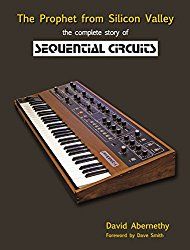
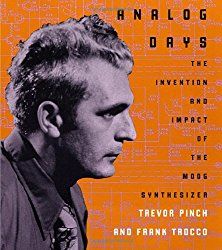
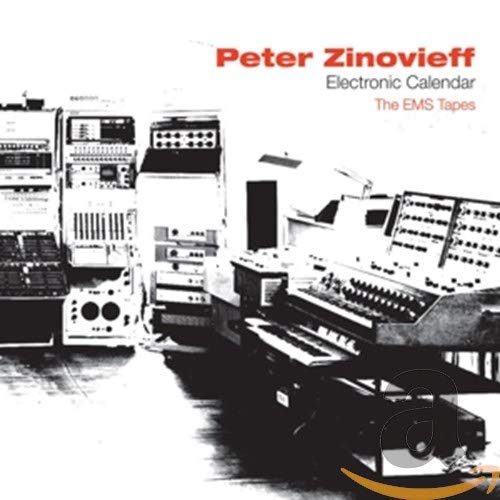
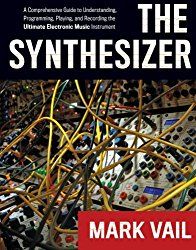
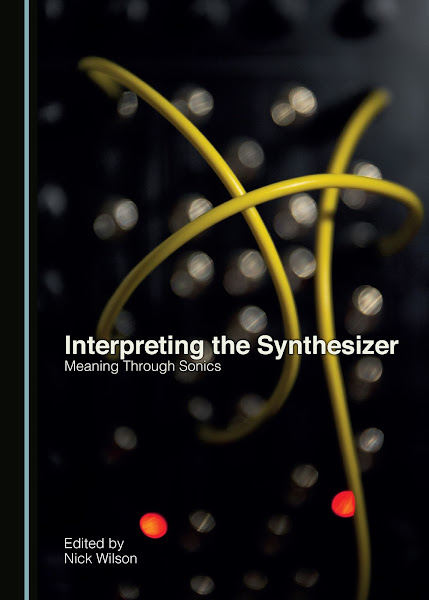
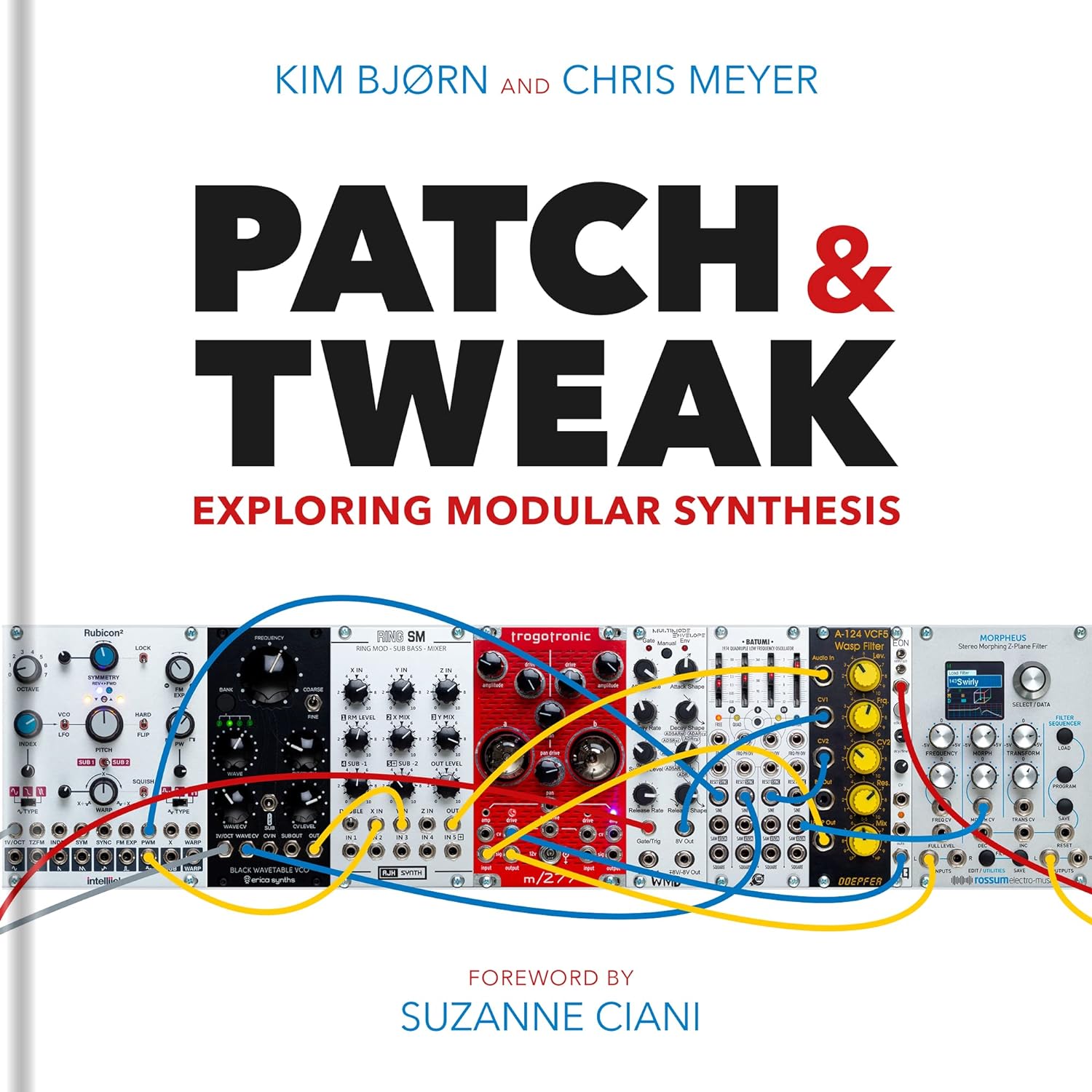

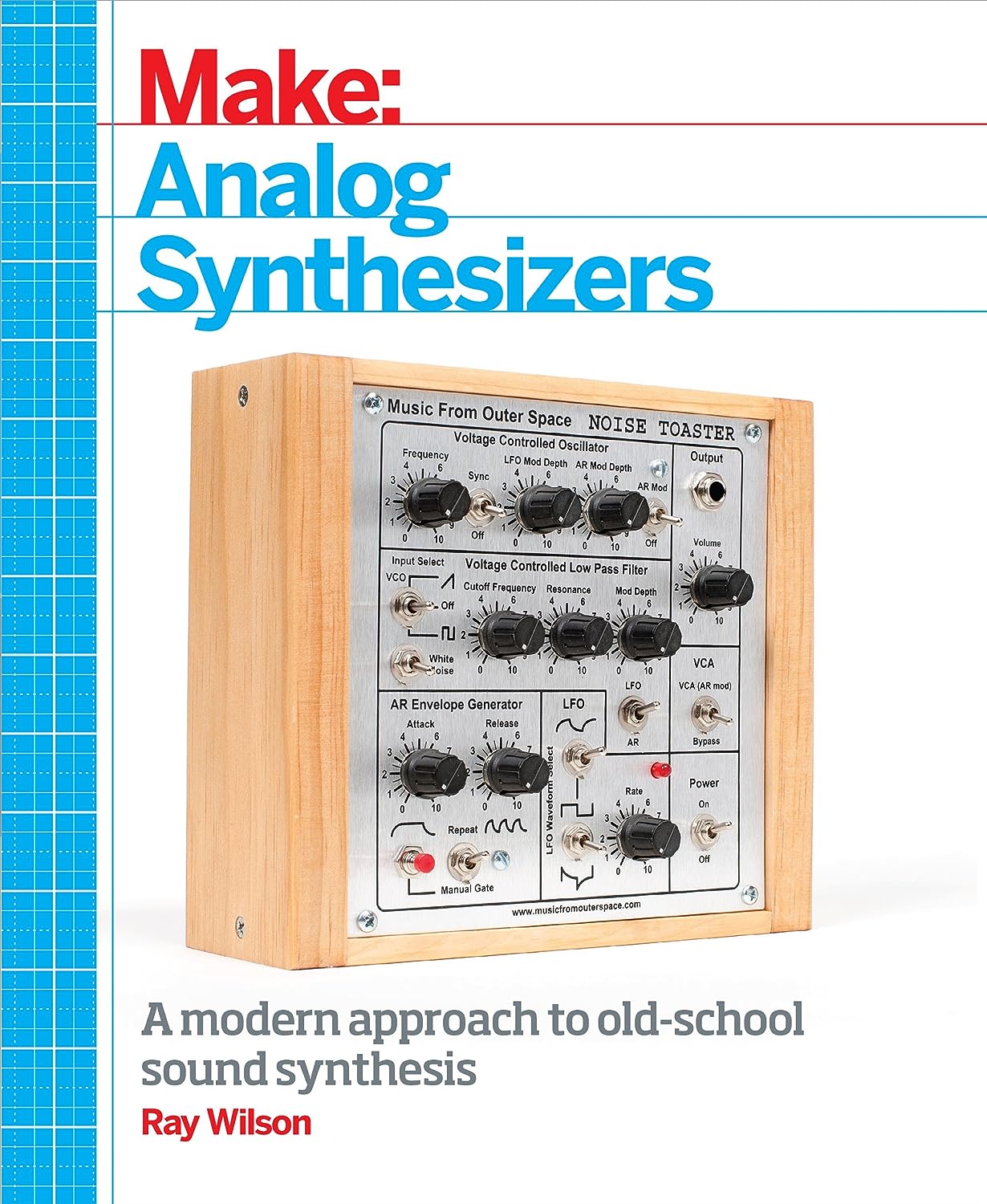
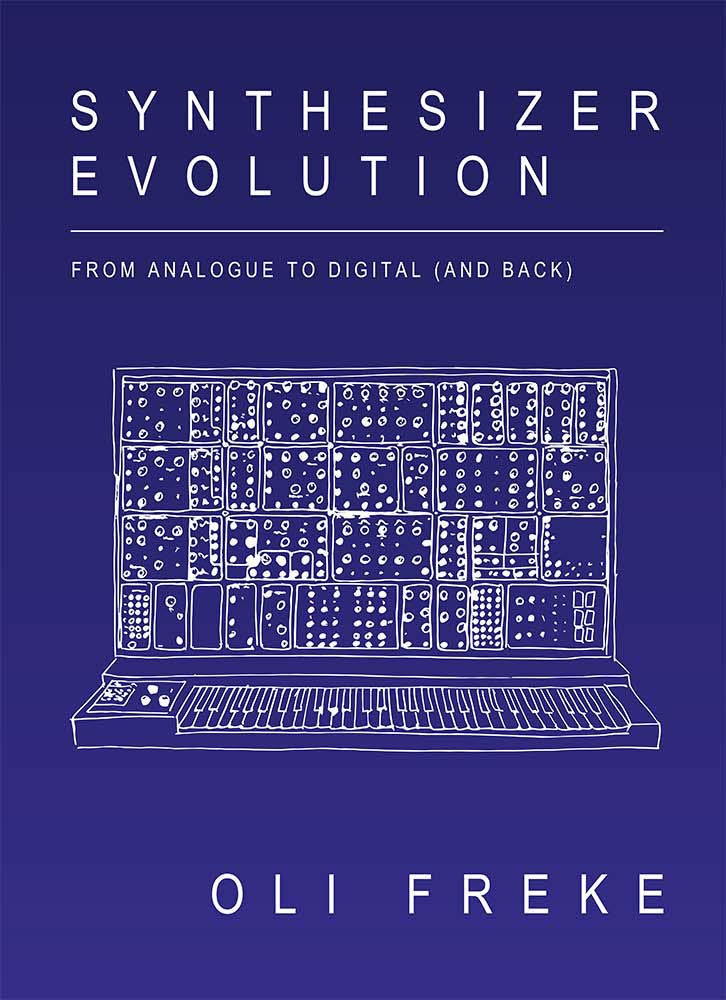
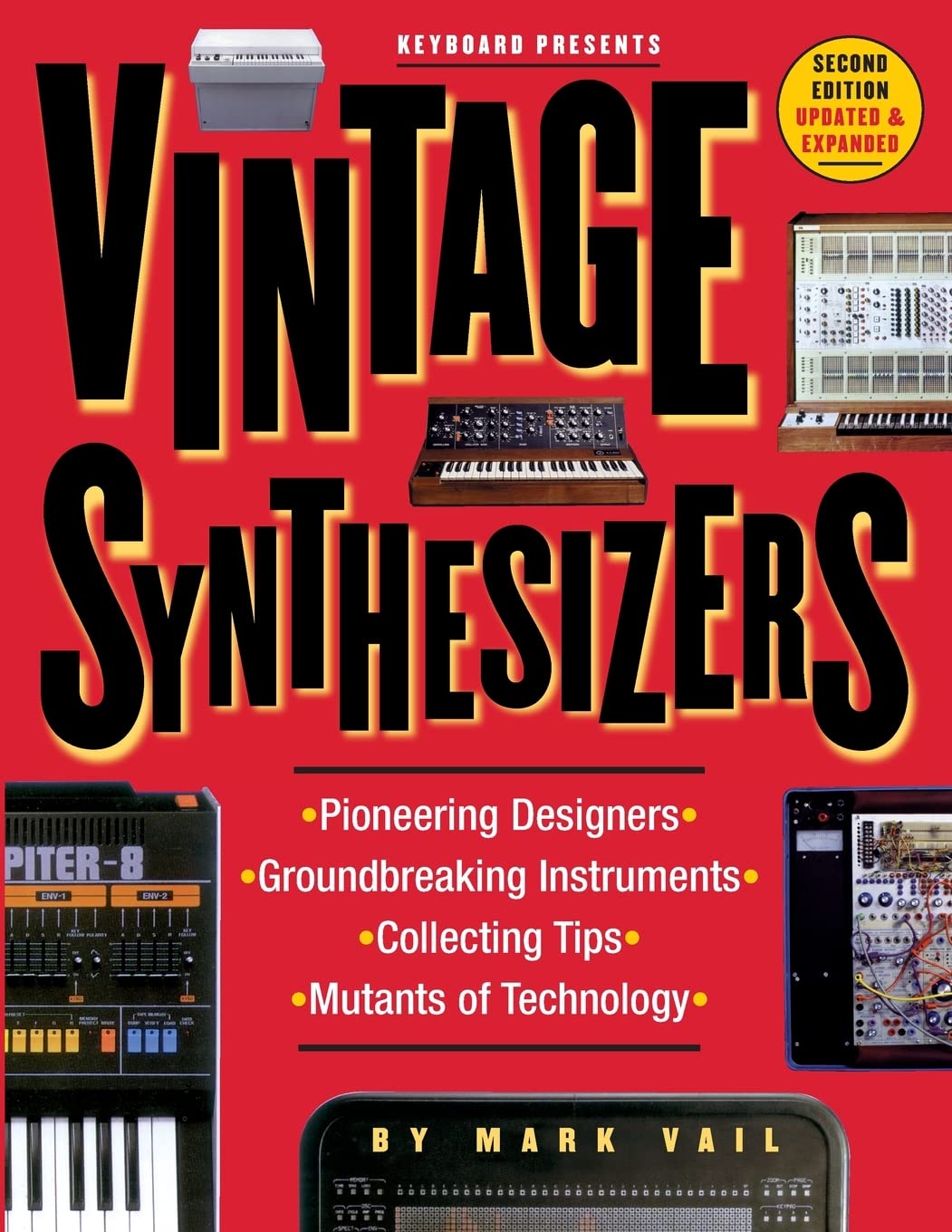
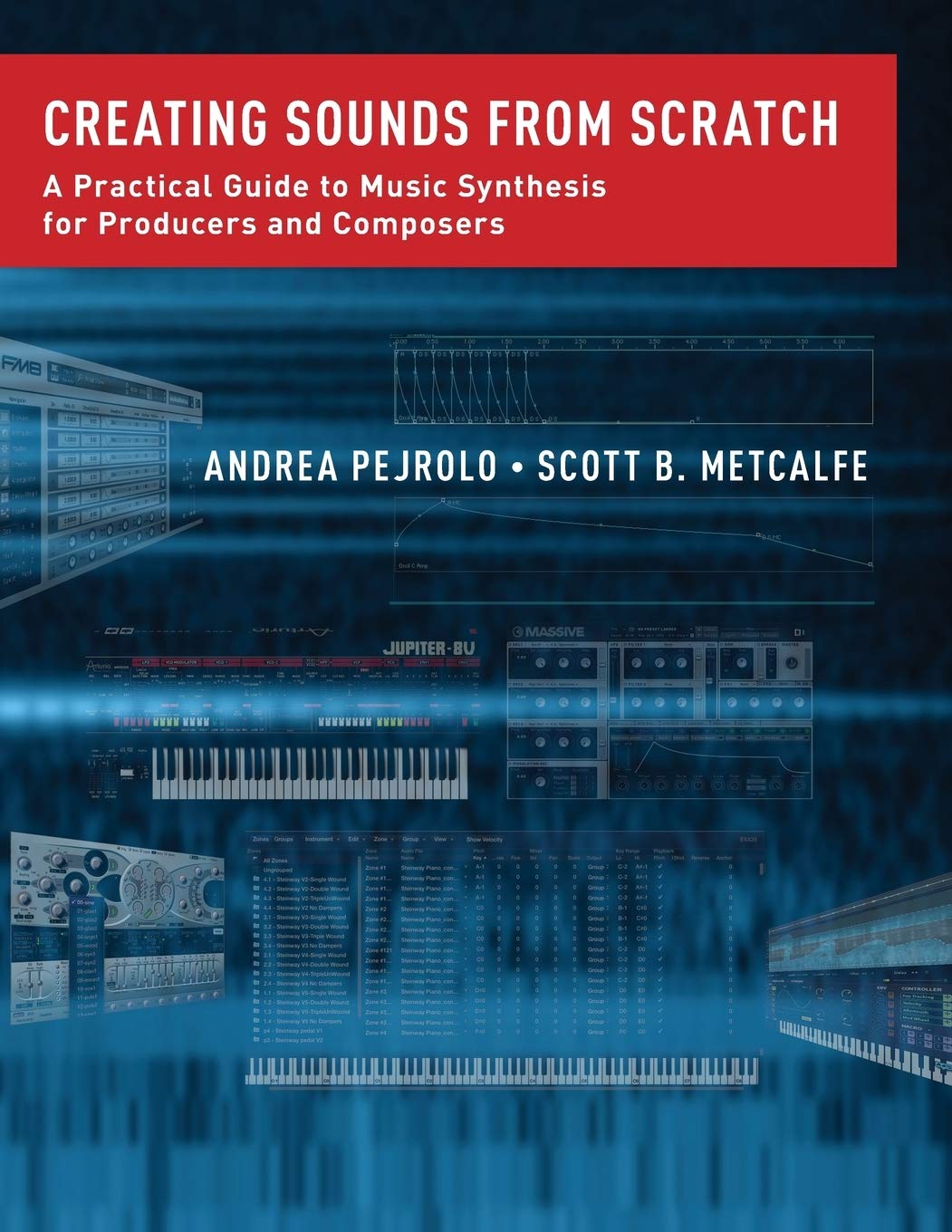
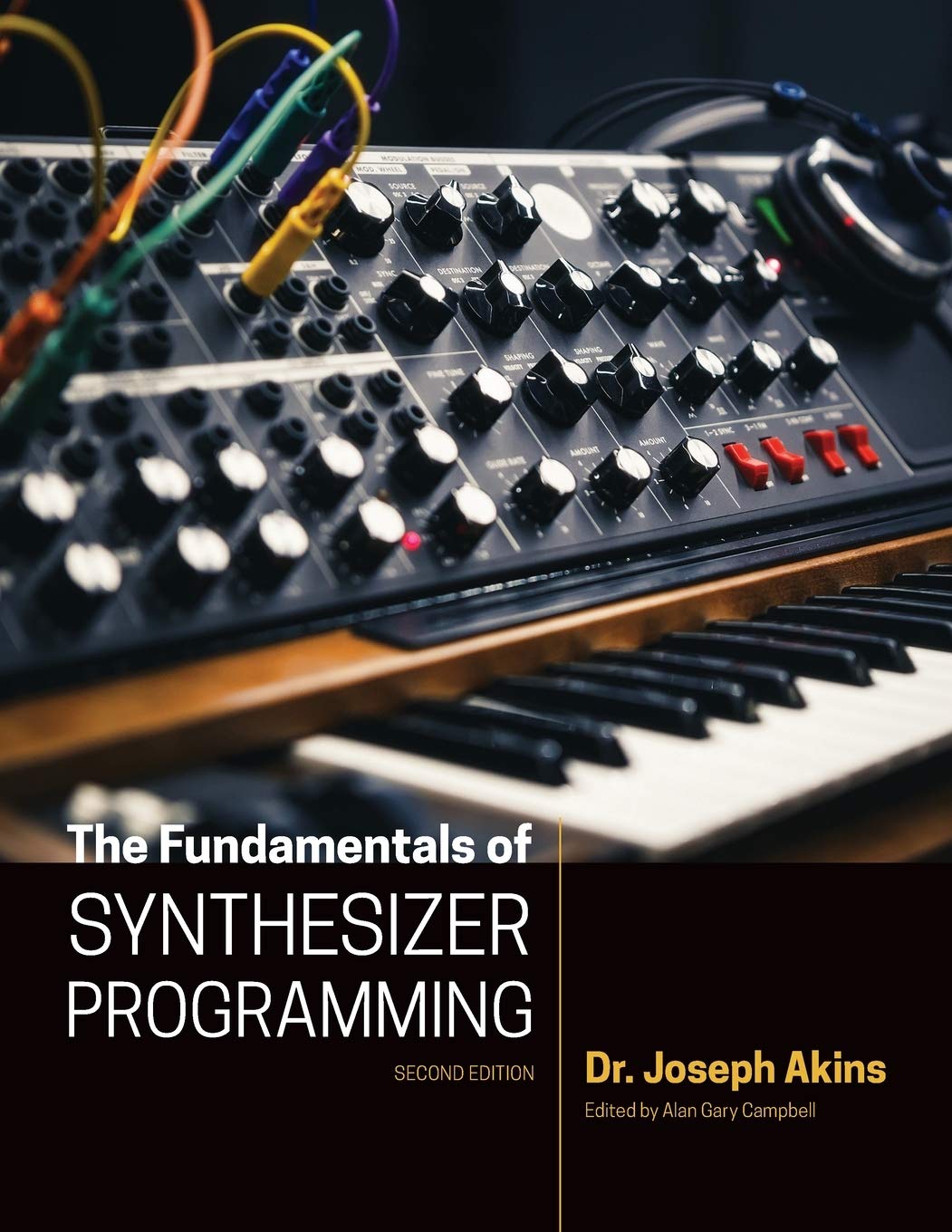

© Matrixsynth - All posts are presented here for informative, historical and educative purposes as applicable within fair use.
MATRIXSYNTH is supported by affiliate links that use cookies to track clickthroughs and sales. See the privacy policy for details.
MATRIXSYNTH - EVERYTHING SYNTH













© Matrixsynth - All posts are presented here for informative, historical and educative purposes as applicable within fair use.
MATRIXSYNTH is supported by affiliate links that use cookies to track clickthroughs and sales. See the privacy policy for details.
MATRIXSYNTH - EVERYTHING SYNTH



















